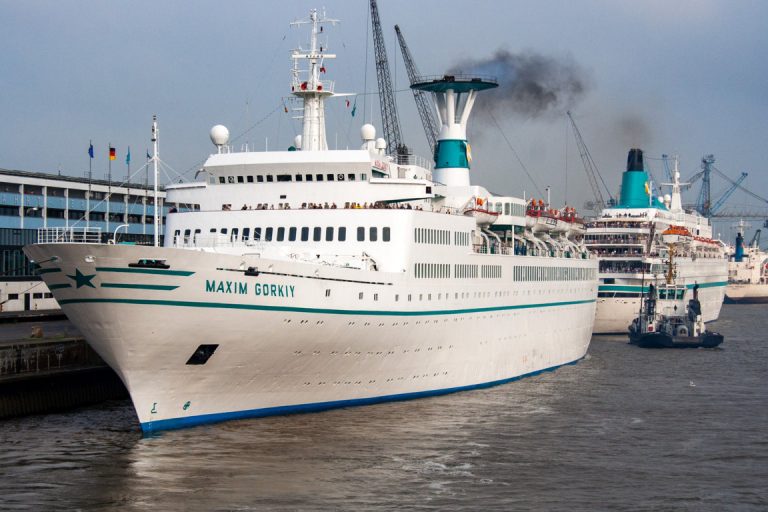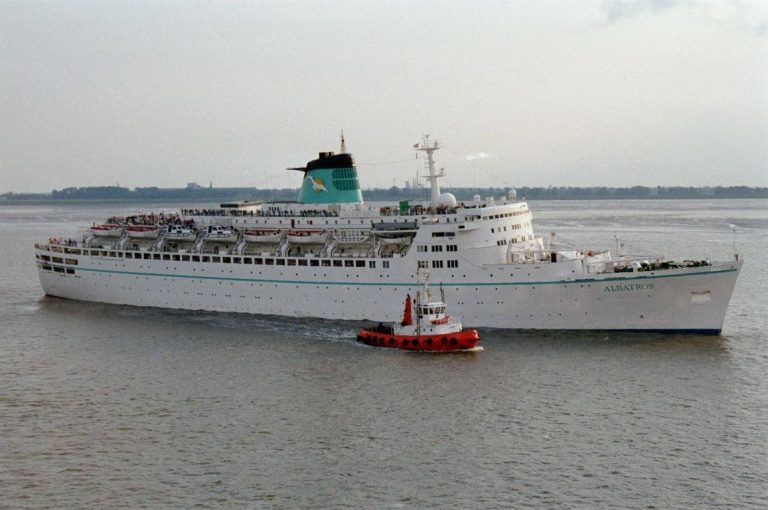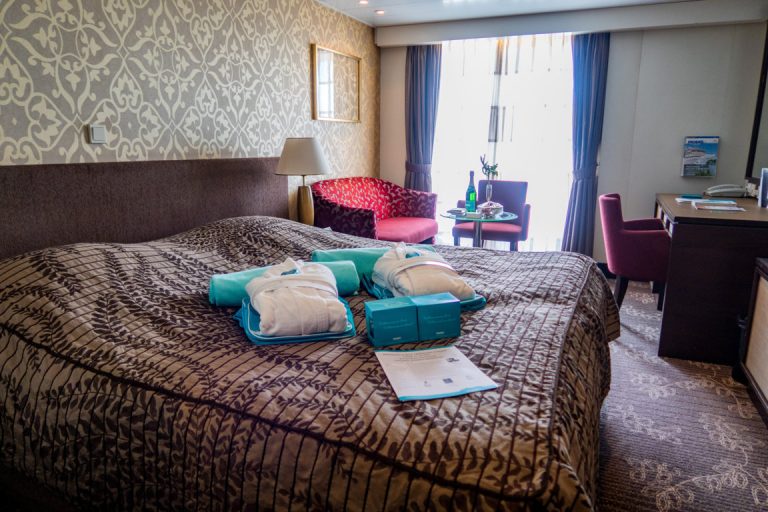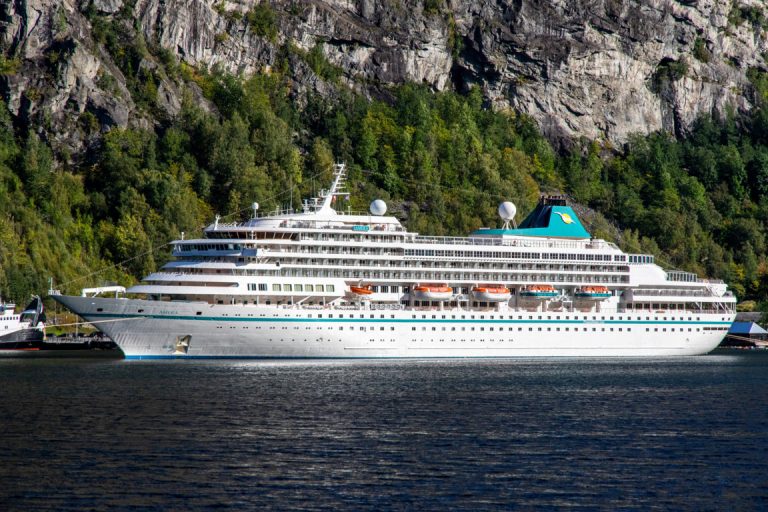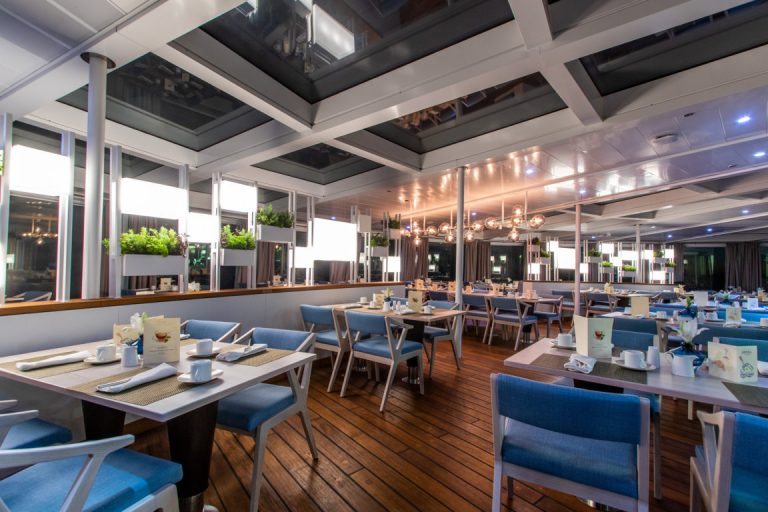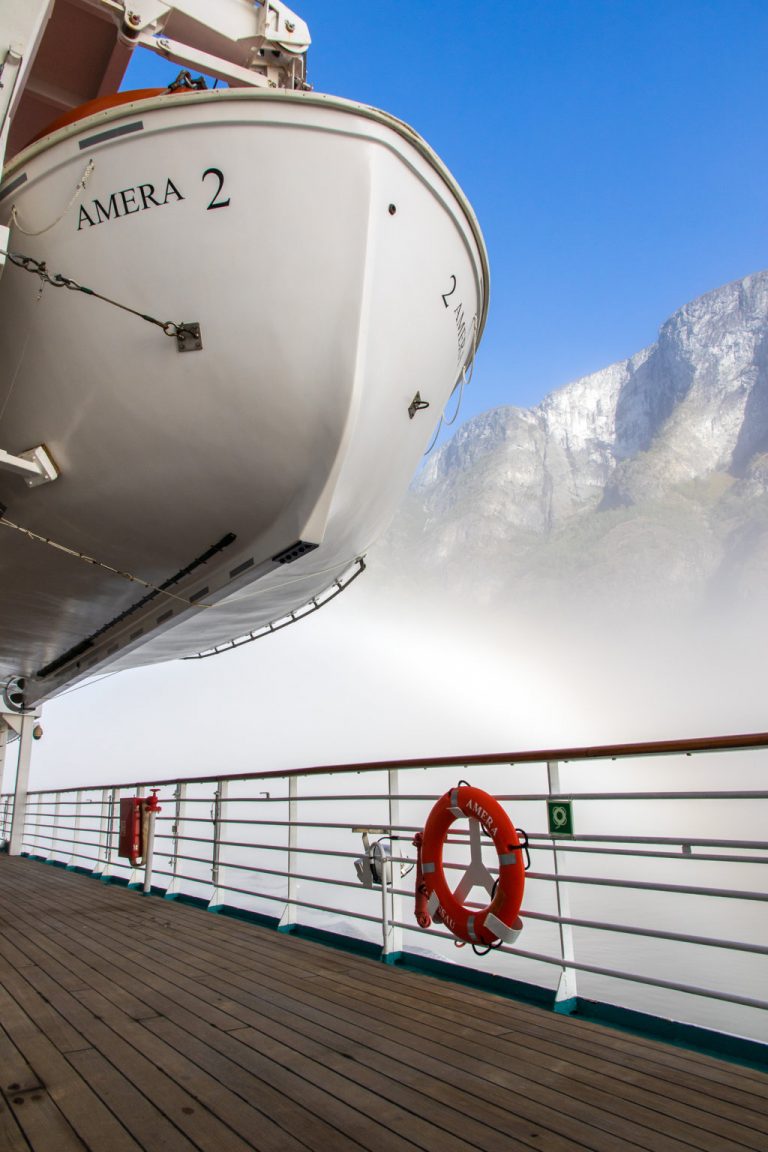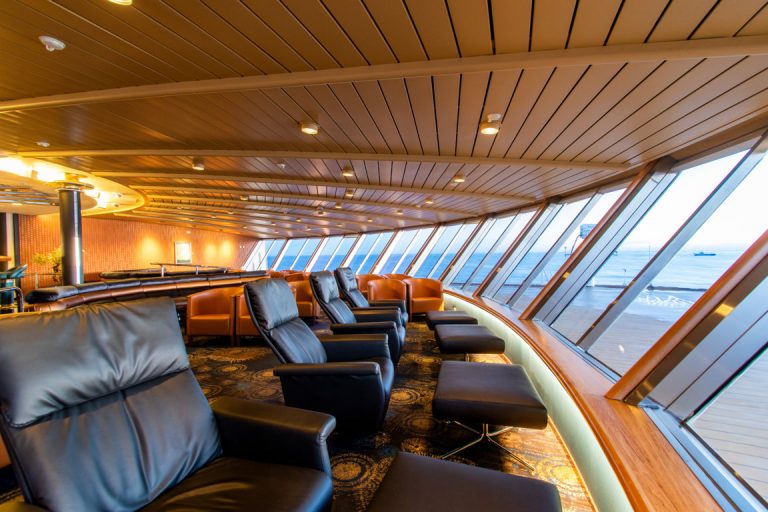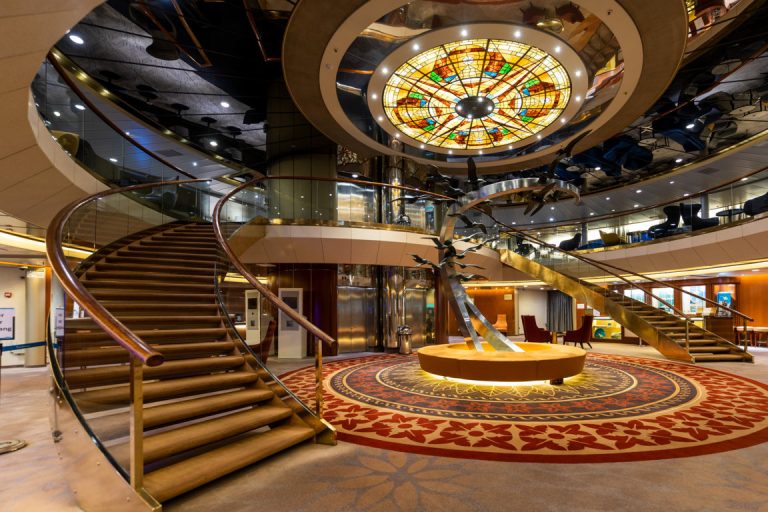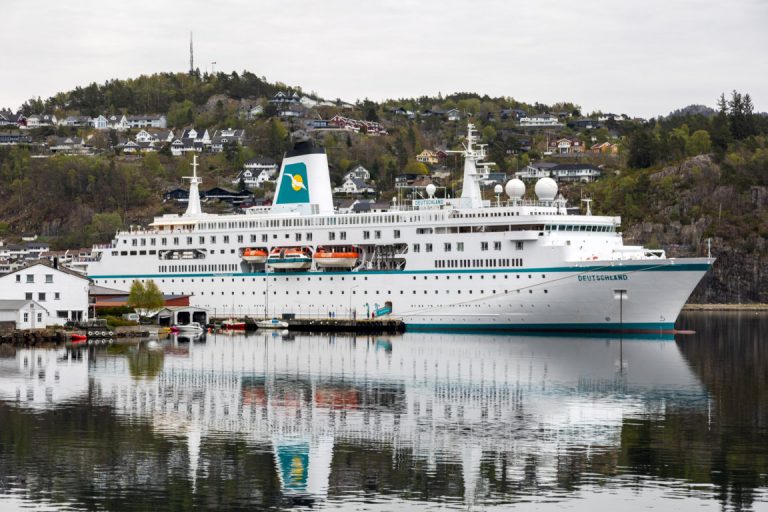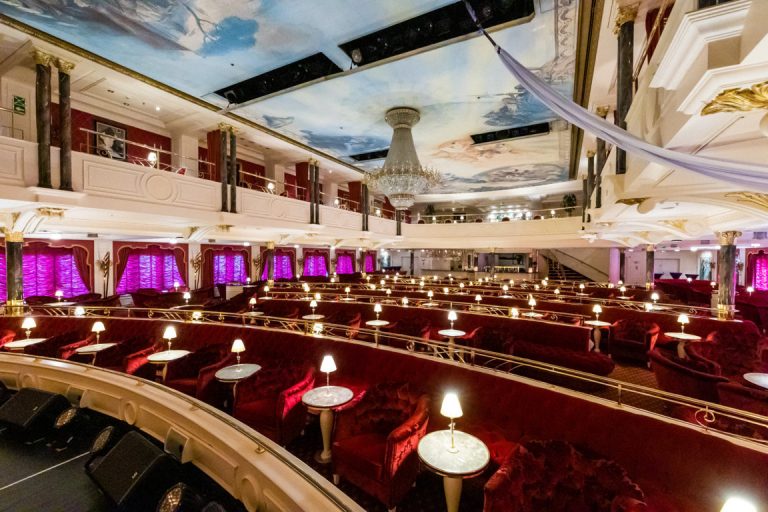50 years of Phoenix Reisen, 50 yr of Welcome Home!
This is an important anniversary and one to be proud of: “50 years of Phoenix Reisen.” In 1973, student Johannes Zurnieden founded Phoenix Flugreisen GmbH in the then-West German capital, Bonn.
Initially, the company had nothing to do with cruises. It wasn’t until 1988 that Phoenix Reisen entered the cruise market when Neckermann Reisen ended the charter of their popular cruise ship Maxim Gorkiy (formerly Hamburg). With their first “self-owned” chartered ship, owned by the Soviet Black Sea Shipping Company at the time, they also welcomed Hubert Schulte-Schmelter as the director of sea travel and cruise director Winfried Prinz to the Bonn-based organizer. The rest is history, as they say, and it’s a success story with many highs and few lows. Among the lows, there is no doubt the near-shipwreck of the Maxim Gorkiy less than a year after its purchase: the ship ran aground in a drifting ice field off the Svalbard Islands and took on water. No one was seriously injured, and the severely damaged Maxim Gorkiy managed to reach Bremerhaven after quick emergency repairs. A few months later, in October 1989, US President George H.W. Bush and Soviet leader Mikhail Gorbachev met aboard the Maxim Gorkiy off Malta during a summit.
MAXIM GORKIY & MS ALBATROS
Today, Phoenix Reisen is one of the major cruise operators in Germany and the largest independent one. At the same time, it is one of the last companies in the German-speaking world to offer traditional cruises on classic ships. River cruises are another focus, and in this sector, Phoenix Reisen owns over 30 ships, some of which are chartered for single trips, but often for the entire season, by renowned shipping partners, and they have been largely designed and built in collaboration with the Bonn-based organizer.
To date, a total of 14 cruise ships have been part of Phoenix Reisen’s fleet, initially under the supervision of sea travel directors Hubert Schulte-Schmelter and Ben Uythof. After their retirement due to age, Michael Schulze took over responsibility for this sector from as early as 2006. In addition to classics like the Maxim Gorkiy, which sailed for over 20 years for Phoenix Reisen, and the first Albatros, which was in service from 1993 to 2003, there were also ships that were in service for the Bonn-based organizer for only a short time.
TS ALBATROS
The ship that would later become the Maxim Gorkiy was originally built as the HAMBURG in 1969 for the Hamburg-Atlantic-Linie at the Howaldtswerke-Deutsche Werft shipyard in the city of the same name. In 1973, the shipping company went out of business, and the ship, which had been renamed Hanseatic in the meantime, passed through intermediaries to the Soviet Black Sea Shipping Co. From then on, it mainly operated as the Maxim Gorkiy, often chartered for foreign currency earnings by Western tour operators. Starting in 1988, it was exclusively chartered to Phoenix Reisen. Eventually, the old vessel would have required a steam turbine propulsion system and extensive modifications to comply with SOLAS 2010 regulations. This led to the end of the charter in 2008 and, the following year, the demolition of the Maxim Gorkiy in India.
The first Albatros was originally a true Cunarder: built in 1957 as the Sylvania by John Brown & Co. in Scotland. However, the success of long-distance flights soon ended its career on the transatlantic routes from Greenock and Liverpool, especially to Montreal. In 1968, together with its sister ship Carinthia, it was sold to Sitmar, undergoing a radical transformation that radically changed the ship’s appearance. After Sitmar was acquired by Princess Cruises, the ship became the first Dawn Princess in 1988 before becoming the Albatros for Phoenix Reisen in 1993. In 2003, there were mechanical problems, and Phoenix Reisen terminated the charter. The Albatros completed its final cruise before being scrapped in Alang.
AMADEA in Amsterdam
However, in 2004, the second Albatros began its service. Built in 1973, the same year as the founding of Phoenix Reisen, it would likely have celebrated its 50th birthday this year if it hadn’t been for the COVID-19 pandemic and its devastating consequences on the cruise industry. Thus, in 2020, the popular cruise ship, known for the ARD documentary series “Verrückt nach Meer” (“Crazy for the Sea”), was sold and later scrapped. This ship entered service as the youngest of the three sister ships for the Royal Viking Line. It was originally built as the Royal Viking Sea at the Wärtsilä shipyard in Helsinki and was one of the most luxurious cruise ships of its time. In 1983, it was lengthened by about 28 meters in Bremerhaven. After the Royal Viking Line was acquired by the Kloster Group, the ship was initially transferred to the Royal Cruise Line and later to Norwegian Cruise Line. After a period in Asia, Phoenix Reisen acquired the ship in March 2004 until it was retired due to the pandemic in 2020.
AMADEA – Kopernikus Bar
Phoenix Reisen‘s oldest current cruise ship is also its flagship, the AmaDea, built in 1991 in Japan as the ASUKA and added to the fleet in 2006. At the time, this was an unexpected and unusual step to acquire a ship built in Japan for the Japanese market, which had been replaced by its owner NYK Cruises (a subsidiary of the large shipping company Nippon Yusen Kabushiki Kaisha, or NYK Line) with a significantly larger and more luxurious ship, although slightly older. Today, the original Japanese style of the AmaDea is hardly recognizable. Initially, some public areas seemed essential, and the Japanese toilets, which could be complex for German passengers, gave the ship an exotic and unusual charm. However, it is essential to remember that the AmaDea represented a significant step forward in terms of modernity and comfort compared to the aging Maxim Gorkiy and the second Albatros, which was a luxurious 1970s ship. A large number of balcony cabins satisfied the growing demand for upper-category accommodations. The extensive mural “Ode to the Seasons” by artist Noriko Tamura with traditional Japanese motifs, some suggestive, adorns the lobby, and in tribute to the ship’s previous incarnation, there is the “Asuka Japanese Room.” Like some other ships from the 1980s and 1990s, the AmaDea stands out for an unusual layout, with cabins at the front and public areas almost exclusively at the rear. Even the smaller cabins on board, at least 17 square meters each, are surprisingly spacious, although they are quite narrow and elongated. They have all been completely renovated in the meantime.
AMADEA Suite
Amera Pool
After the departure of the Maxim Gorkiy from the fleet, a new and interesting ship for Phoenix Reisen was quickly found in what was the ARTEMIS, previously known as the Royal Princess, which operated for P&O Cruises. This ship added an entirely new dimension to the fleet, but negotiations with the owner, Carnival Corporation & plc, were complex. It was only in the spring of 2011 that the largest ship in Phoenix’s history, with almost 45,000 tons, could embark on its first short cruise in the Netherlands. Built in Finland in 1984 for Princess Cruises, the Royal Princess was ahead of its time: exclusively outside cabins, including many with balconies; a modern ship layout, with a significant portion of the public areas located below the cabin decks; an elegant and modern silhouette that still looks current. Baptized by the unforgettable Diana, Princess of Wales, the Royal Princess was the flagship of Princess Cruises until the Grand Princess entered service in 1998, even though the company had expanded its fleet with a series of larger and newer ships in the meantime. In 2005, the ship was transferred to sister company P&O Cruises, where it took on the name Artemis. The Greek goddess Artemis corresponds to Diana in Roman mythology.
AMERA in Geiranger
AMERA Lido-Wintergarten
In the meantime, the Artania has been in service for Phoenix Reisen for a remarkable 13 years, and the Bonn-based operator has revised nearly every area of the ship. Initially, a second main restaurant was added in a space that was previously a lounge in the rear so that passengers could dine in the three total restaurants (including a buffet restaurant) during an extended period with open seating. Similarly, the second Albatros had been refurbished to offer two dining times in a similar manner. The rear outdoor terraces, which were underutilized during the Artemis‘s time, have been significantly improved. A passage to the lower crew deck was closed, creating one of the most beautiful spots at sea, with outdoor bars and a lounge. Here, you can relax on comfortable chairs on multiple levels and enjoy a drink with a direct view of the wake.
Over the years, besides reorganizing public areas, significant improvements have been made to the cabins. Initially, all bathrooms were entirely renovated, replacing bathtubs with showers. Many exterior cabins in the superstructure area were equipped with balconies, and finally, two years ago, even the last cabins received a completely renewed interior. The ship’s strengths lie primarily in its spacious public areas and marvelous outdoor terraces. From the previously mentioned Phoenix Bar & Lounge in the rear to the teak terrace surrounding the ship, to the two pool areas and the observation platform high on the ship, the Artania genuinely offers the best views and a connection to the sea that is increasingly compromised on modern resort-style ships by high glass walls.
AMERA in the Fjords
AMERA Panorama-Lounge
In 2014, a competitor of Phoenix Reisen, the shipping company Peter Deilmann, declared bankruptcy. The company, based in Neustadt in Holstein, operated the Deutschland , a classic cruise ship built in 1998, whose reputation in the German-speaking market is hardly matched, given that since 1999, it had been used as “Das Traumschiff” (“The Dream Ship”) in the ZDF television series of the same name. During the bankruptcy proceedings, the Deutschland was sold to American investors who used it as the World Odyssey for Semester at Sea from late 2015. In this role, the ship served as a floating campus traveling the world.
For the summer months, starting in 2016, Phoenix Reisen secured the ship’s services, which are expected to sail under its original name, Deutschland , but with the Phoenix brand, at least until 2025. Each year, in September, the ship is renamed World Odyssey and then, in the following spring, returns to being called Deutschland . According to the plans and visions of the shipping company’s founder, Peter Deilmann, the ship was built in 1998 at HDW in Kiel. Externally, it appears rather traditional, but inside, the luxurious Deutschland boasts opulent “Roaring Twenties” style decor. However, the trend of balcony cabins was not to the liking of the owner of the North German Lloyd. He wanted “his” passengers to gather and socialize outdoors rather than enjoy the sea from their own balconies. In hindsight, this was clearly a wrong decision. The Deutschland became a symbol of the cruise tradition in Germany, especially when, in 1999, it took on the lead role in the television series “Das Traumschiff,” replacing the Berlin, an older ship in the Deilmann fleet. However, Phoenix Reisen, as a “part-time charterer,” could not make significant changes to the ship, and the regular clientele would hardly tolerate significant alterations. Therefore, the “Deutschland” remains today, in contrast to Phoenix’s common practice, a ship with two fixed meal times. Public spaces have also remained largely unchanged. From the Kaisersaal ballroom to the portrait of Peter Deilmann in the Salon Lili Marleen, to the numerous (sometimes bold) sculptures on board, little has changed.
ARTANIA in Berge
ARTANIA Lobby
The most recent addition to Phoenix’s fleet is the Amera, which began its service for the Bonn-based operator for the first time in 2019 and was previously named Prinsendam when it sailed for Holland America Line, a subsidiary of Carnival. The ship was built in 1988 as the luxury ship Royal Viking Sun for the Royal Viking Line, although it was built at the Wärtsilä shipyard in Turku, not Helsinki, where Royal Viking had constructed the second Albatros 15 years earlier. After the Kloster Group acquired the Royal Viking Line and handed over the three original ships to other brands within the group, only the Royal Viking Sun and the much smaller Royal Viking Queen remained. In 1994, the brand was sold to Cunard along with the Royal Viking Sun, which operated the ship until 1999 before transferring it to the sister Seabourn brand and ultimately, in 2002, as the Prinsendam to Holland America Line.
The latter was responsible for a modification that significantly marred the ship’s rear in January 2010, with the installation of 21 new cabins. The effects of this can still be felt today, as the ship appears quite bulky at the rear, with suboptimal passenger flow. However, Phoenix Reisen made a rather controversial change when it acquired the ship in the summer of 2019: the main pool was removed from the upper pool deck and replaced with a multifunctional area called “Schöne Aussichten” (“Beautiful Views”). As of the time of writing, the Amera is back in the shipyard. New main engines and generators are being installed, among other things, at Remontowa in Gdansk, Poland. Additionally, numerous cabins will be renovated, and public areas will be updated. After the second Albatros and the Artania, the Amera is already the third ship that Phoenix is having repowered. On the AmaDea, the main engines were updated with a MAN SCR system, taking the ship from the MARPOL Tier 0 level to the Tier III level.
DEUTSCHLAND
DEUTSCHLAND Kaisersaal
Fifty years of Phoenix Reisen: What is the secret to their success? Like no other traditional cruise operator in the German-speaking market, Phoenix Reisen manages to strike a balance between continuity and prudent innovation. The company mainly operates classic ships of a certain age but with modern amenities such as balcony cabins, which are now essential for a high-end product. The Deutschland , a kind of “nostalgic ship,” is an exception to this rule, although at the same time, it is the youngest ship in the fleet.
Phoenix Reisen benefits not only from a loyal customer base built over decades but is also capable of exciting younger customers for this type of cruise. For both customers and distribution through travel agencies, it is essential to know what to expect from Phoenix. There are no last-minute discounts to fill cruises with low attendance or daily changing prices. What’s in the catalog is valid. Only for very early bookings, a 3% discount is offered, along with a “birthday bonus” on selected cruises. Each passenger is personally welcomed by the cruise director with a “Welcome Home” as soon as they board the ship. The seemingly non-economic value for money is significantly alleviated when considering the very low additional costs on board: draft beer (0.5 liters) at 3.70 euros; the most expensive cocktail at 5.90 euros (as of 2023), and so on – a relief for your wallet while on vacation! Johannes Zurnieden, the company’s founder, has been leading the company for 50 years, although Benjamin Krumpen and Jörg Kramer became co-directors of the company in 2006. It has emerged that during the challenging times of the pandemic, keeping a lot of money in the company was a smart move. Phoenix Reisen is becoming increasingly popular not only among German-speaking travelers but also among international ship enthusiasts. Four “unique” ships without sisters, some of which were ahead of their time and now stand out for a captivating mix of tradition and modernity, spaciousness and elegance, attract overseas passengers as well.
Don’t miss further Phoenix Reisen news, updates and reviews on Cruising Journal with photos, videos and cruises on offer.

